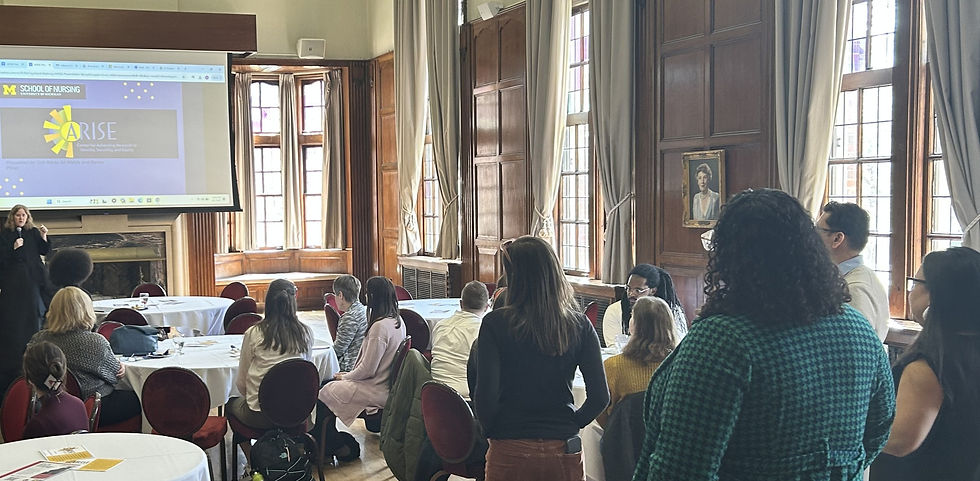Exploring Neighborhood Resources and HIV Antiretroviral Adherence Insights from Loren Dobkin's CROI Presentation
- ARISE Team
- Mar 20
- 2 min read
Updated: Apr 25
At the 2025 Conference on Retroviruses and Opportunistic Infections (CROI) in San Francisco, PhD candidate Loren Dobkin shared her research on factors associated with HIV antiretroviral adherence. Her work shines a light on how neighborhood resources impact HIV medication adherence and care engagement among men living with HIV. Understanding these relationships could enhance health interventions to facilitate HIV viral suppression in high impact areas. Her poster was co-authored by ARISE members, Ali Walsh, Luis Parra, and Erin Kahle.

Understanding the Research
Loren Dobkin assessed how neighborhood resources, measured by the Neighborhood Disadvantage Index (NDI), affect adherence to antiretroviral therapy (ART). Medication adherence is crucial; studies show that when individuals consistently take their HIV medication, the rate of viral suppression can rise to over 90%, leading to better health and quality of life.
Using mediation analysis, Dobkin explored how social determinants of health (SDoH), like economic stability and education, mediate the effects of the neighborhood resources on ART adherence. Her findings support existing evidence that social determinants of health have a strong association with ART adherence, and the effect of neighborhood resources is indirectly linked to adherence through individual SDoH.
The Importance of Findings
A prominent finding from Dobkin’s presentation is the pathway from adverse neighborhood conditions to accumulation of adverse SDoH that strongly predict ART adherence. Previous studies have found persistent disparities in HIV transmission and related morbidity due to neighborhood and individual barriers, suggesting a link to suboptimal adherence in highly impact geographic areas.
Neighborhood context and individual experiences may help inform clinical decisions about ART selection and development of adherence plans. Further, this research highlights the need for healthcare interventions that address both neighborhood factors and individual challenges. A comprehensive approach could significantly improve ART adherence rates among vulnerable populations.
needs.



Comments